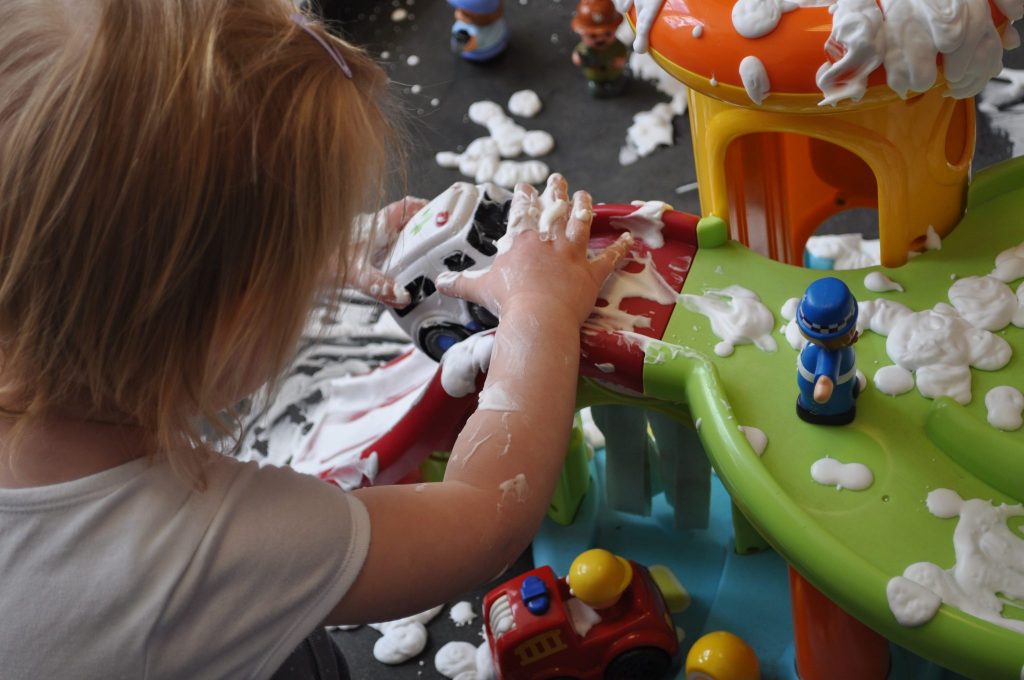Ever wondered what the Characteristics of Effective Learning are?
Many practitioners are still unsure as to what the Characteristics of Effective Learning are. The Characteristics of Effective Learning and the prime and specific areas of learning are all interconnected. They should also underpin everything that practitioners offer in the environment. The characteristics describe how a child learns.
When children are left to explore a stimulating learning environment on their own, they will learn through playing and exploring. However, this is not enough. Children need support from a skilful practitioner, who has the knowledge of when to intervene and give guidance. This support will help children make significant progress in their learning. Practitioners must not push children; they must look closely at their emotional and intellectual abilities and find out what they can do. When planning activities or experiences practitioner’s must remember the different ways in which children learn and reflect these in practice.
Characteristics of Effective Learning
Playing and exploring
Finding out and exploring
Playing with what they know
Being willing to ‘have a go.’
Active learning
Being involved and concentrating
Keeping trying
Enjoying achieving what they set out to do
Creating and thinking critically
Having their own ideas
Making links
Choosing ways to do things
Playing and exploring
It is important that the environment actively encourages and offers children the opportunity to play and explore. Children need to be able to explore in every area of your provision. Within these areas, there needs to be opportunities for children to explore and investigate using open-ended resources. Children need to be able to use their imagination and explore their surroundings. Why not revisit your areas of your room and evaluate whether they provide vast opportunities for children to fully play and explore and look to see if there are enough open ended resources. Don’t forget to involve the team in this process as this will help them to understand how important the learning environment is.
Active learning
Many practitioners think that active learning is about children being physically active. However, children also demonstrate active learning when engaging in activities that require them to use their mental abilities. For example children will show a can-do attitude when attempting to do a task, they will show a great deal of concentration and will rarely give up on the task. Children are more interested in attempting a task if it is of interest to them. Therefore, adults should tune into children’s interests. Creating an environment that is led by children’s interest will encourage children to become active learners. It will also help practitioners identify and plan the children’s next steps.
Creating and thinking critically
For children to be creative and critically think, practitioners need to provide children with lots of opportunities to work things out on their own or with others; this will develop their problem solving skills. At times, adults will need to use their skilful knowledge and know when to intervene and scaffold children’s learning. As we know young children observe what is happening around them and they absorb the information. As children begin to engage fully in activities, they will start asking questions about how things work. At this stage, adults need to be skilful in asking open-ended questions to help extend the learning opportunities.
Gathering evidence of how children learn
From September 2015, Ofsted inspectors will gather their evidence as to how children learn from direct observations. They will be looking closely at how children demonstrate the Characteristics of Effective Learning. It is imperative that all practitioners have a clear understanding as to how all children learn and develop. During an Ofsted inspection, the inspector will look at how much progress children are making; they will look to see the progress achieved during adult led activities and also child initiated activities.
Identifying Characteristics of Effective Learning within observations
It is good practice when observing children to look for the Characteristics of Effective Learning and note these on your observations. Adults should consider the Characteristics of Effective Learning within the observation, assessment, and planning cycle. Why not use the development matters as a tool to help you during your observations, as it gives guidance on what adults could do and what they can provide.
Remember that the Characteristics of Effective Learning are about how children learn rather than what children are learning.

